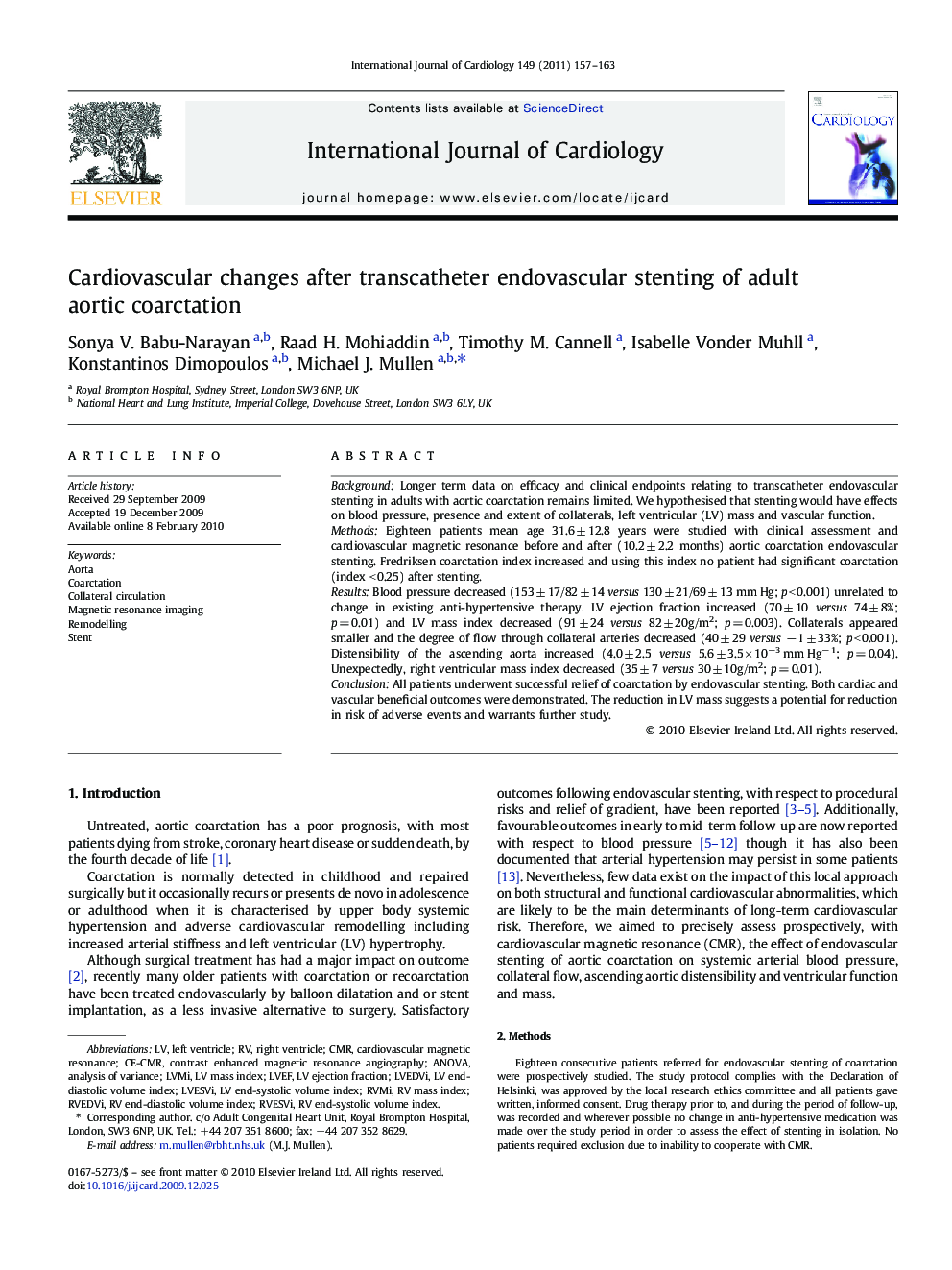| Article ID | Journal | Published Year | Pages | File Type |
|---|---|---|---|---|
| 5979078 | International Journal of Cardiology | 2011 | 7 Pages |
BackgroundLonger term data on efficacy and clinical endpoints relating to transcatheter endovascular stenting in adults with aortic coarctation remains limited. We hypothesised that stenting would have effects on blood pressure, presence and extent of collaterals, left ventricular (LV) mass and vascular function.MethodsEighteen patients mean age 31.6 ± 12.8 years were studied with clinical assessment and cardiovascular magnetic resonance before and after (10.2 ± 2.2 months) aortic coarctation endovascular stenting. Fredriksen coarctation index increased and using this index no patient had significant coarctation (index < 0.25) after stenting.ResultsBlood pressure decreased (153 ± 17/82 ± 14 versus 130 ± 21/69 ± 13 mm Hg; p < 0.001) unrelated to change in existing anti-hypertensive therapy. LV ejection fraction increased (70 ± 10 versus 74 ± 8%; p = 0.01) and LV mass index decreased (91 ± 24 versus 82 ± 20g/m2; p = 0.003). Collaterals appeared smaller and the degree of flow through collateral arteries decreased (40 ± 29 versus â 1 ± 33%; p < 0.001). Distensibility of the ascending aorta increased (4.0 ± 2.5 versus 5.6 ± 3.5 Ã 10â3 mm Hgâ 1; p = 0.04). Unexpectedly, right ventricular mass index decreased (35 ± 7 versus 30 ± 10g/m2; p = 0.01).ConclusionAll patients underwent successful relief of coarctation by endovascular stenting. Both cardiac and vascular beneficial outcomes were demonstrated. The reduction in LV mass suggests a potential for reduction in risk of adverse events and warrants further study.
